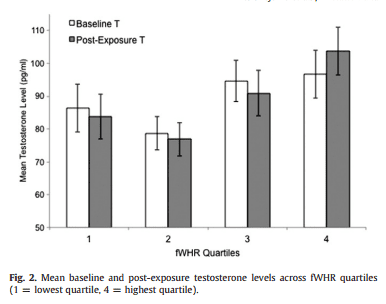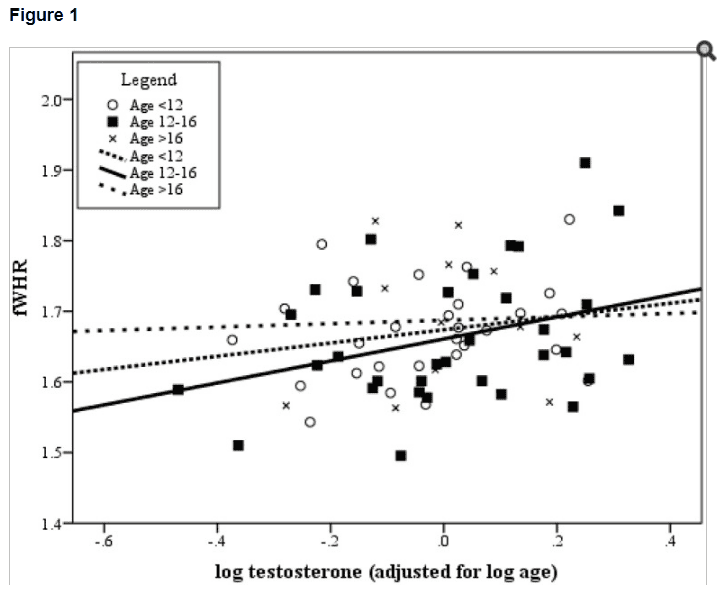RedStaR
Member
- Joined
- Jun 8, 2017
- Messages
- 145
This is partially an extension of a thread in the Vitamin K sub forum. I decided to make a separate discussion for it.
Wider Face After Using Vitamin K?
So let's begin.
_____________________________________________________________________
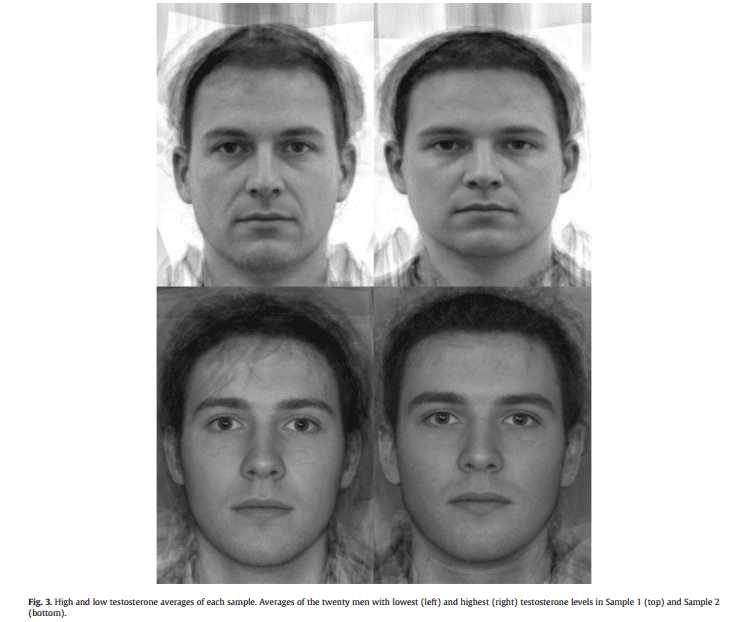
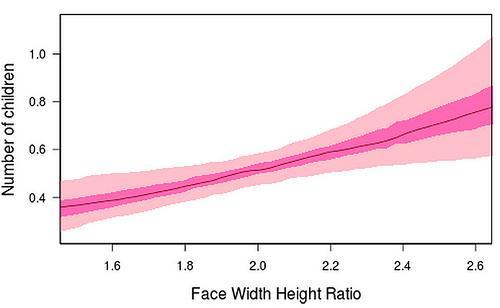


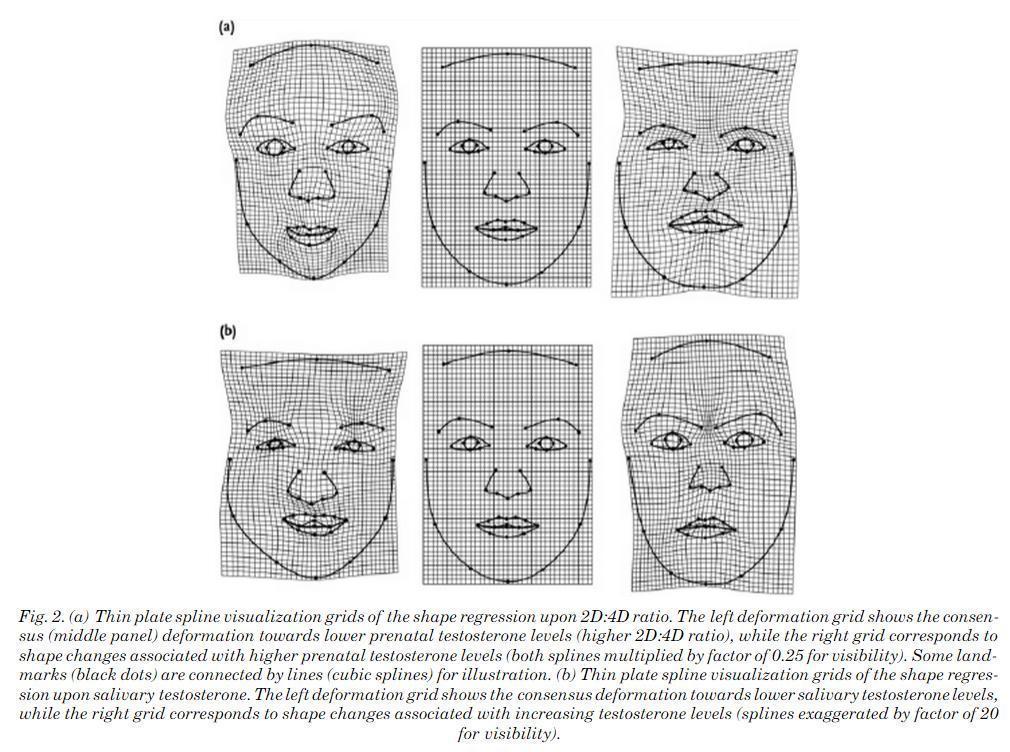
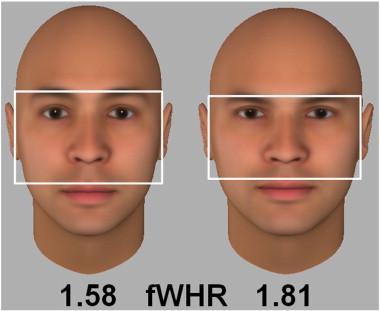
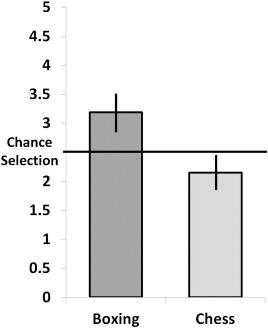
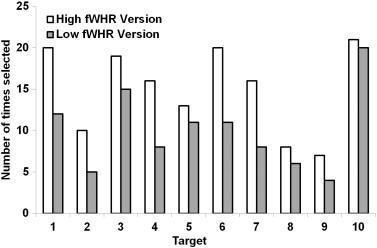
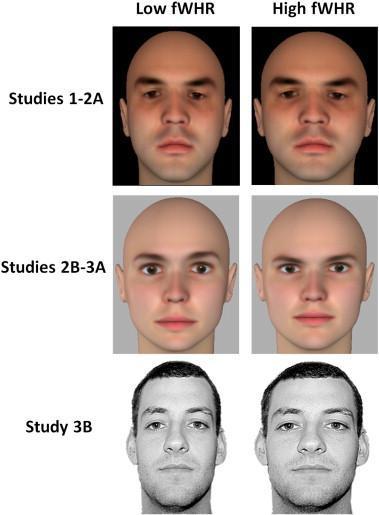
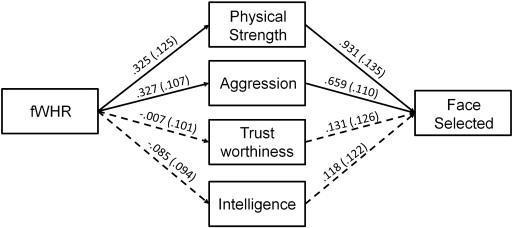

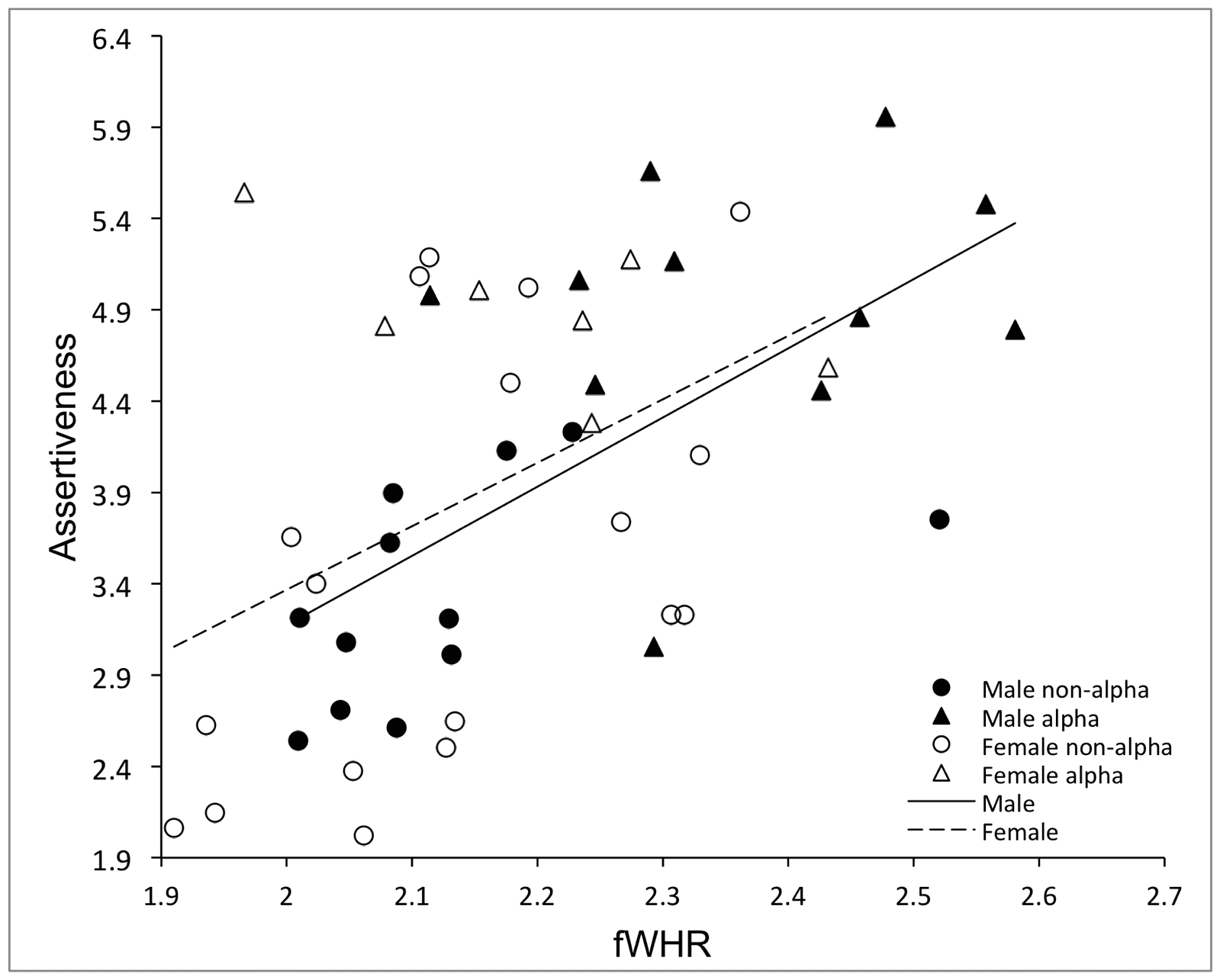
Wider Face After Using Vitamin K?
So let's begin.
_____________________________________________________________________
High facial width-to-height ratio (fWHR) has been associated with a cluster of behavioural traits in men, including aggression and status-striving. This association between face structure and behaviour may be caused by testosterone. Here we investigated the relationship of both baseline and reactive testosterone levels to fWHR. In addition, we investigated the link between testosterone and three well-characterised sexually dimorphic facial metrics. Testosterone was measured in one sample of males (n = 185) before and after a speed-dating event. An additional sample provided only baseline testosterone measures (n = 92). fWHR was positively associated with testosterone reactions to potential mate exposure and marginally associated with baseline testosterone in Sample 1. We found a positive association with baseline testosterone and fWHR in Sample 2. In addition, face-width-to-lower-height ratio was positively associated with testosterone in both samples, suggesting that, in particular, facial width (scaled by two measures of facial height) is associated with testosterone. Importantly, our results also indicate that there is no association between adult testosterone and the sexual dimorphism of face shape. Thus, while our findings question the status of sexual dimorphism as a proxy measure of testosterone, they do provide evidence that testosterone is linked to fWHR and might underlie the relationship between fWHR and behaviour.
Previous research has shown that men with higher facial width-to-height ratios (fWHRs) have higher testosterone and are more aggressive, more powerful, and more financially successful. We tested whether they are also more attractive to women in the ecologically valid mating context of speed dating. Men's fWHR was positively associated with their perceived dominance, likelihood of being chosen for a second date, and attractiveness to women for short-term, but not long-term, relationships. Perceived dominance (by itself and through physical attractiveness) mediated the relationship between fWHR and attractiveness to women for short-term relationships. Furthermore, men's perceptions of their own dominance showed patterns of association with mating desirability similar to those of fWHR. These results support the idea that fWHR is a physical marker of dominance. This is the first study to show that male dominance and higher fWHRs are attractive to women for short-term relationships in a controlled and interactive situation that could actually lead to mating and dating.

We measured facial width-to-height ratio—a trait known to predict aggressive behaviour in males—and assessed whether facial morphology could predict survival, lifetime reproductive success (LRS) and social status. We found no difference in survival along the phenotypic gradient, however, wider-faced individuals had greater LRS, but achieved a lower military rank.

Recent research has identified men’s facial width-to-height ratio (fWHR) as a reliable predictor of aggressive tendencies and behavior. Other research, however, has failed to replicate the fWHR-aggression relationship and has questioned whether previous findings are robust. In the current paper, we synthesize existing work by conducting a meta-analysis to estimate whether and how fWHR predicts aggression. Our results indicate a small, but significant, positive relationship between men’s fWHR and aggression.
Specifically, we found that firms whose male CEOs have wider faces (relative to facial height) achieve superior financial performance. Decision-making dynamics within a firm's leadership team moderate this effect, such that the relationship between a given CEO's facial measurements and his firm's financial performance is stronger in firms with cognitively simple leadership teams.
Recently, associations between facial structure and aggressive behaviour have been reported. Specifically, the facial width-to-height ratio (fWHR) is thought to link to aggression, although it is unclear whether this association is related to a specific dimension of aggression, or to a more generalized concept of dominance behaviour. Similarly, an association has been proposed between facial masculinity and dominant and aggressive behaviour, but, to date, this has not been formally tested. Because masculinity and fWHR are negatively correlated, it is unlikely that both signal similar behaviours. Here, we thus tested these associations and show that: (i) fWHR is related to both self-reported dominance and aggression; (ii) physical aggression, verbal aggression and anger, but not hostility are associated with fWHR; (iii) there is no evidence for a sex difference in associations between fWHR and aggression; and (iv) the facial masculinity index does not predict dominance or aggression. Taken together, these results indicate that fWHR, but not a measure of facial masculinity, cues dominance and specific types of aggression in both sexes.
Decisions about whom to trust are biased by stable facial traits such as attractiveness, similarity to kin, and perceived trustworthiness. Research addressing the validity of facial trustworthiness or its basis in facial features is scarce, and the results have been inconsistent. We measured male trustworthiness operationally in trust games in which participants had options to collaborate for mutual financial gain or to exploit for greater personal gain. We also measured facial (bizygomatic) width (scaled for face height) because this is a sexually dimorphic, testosterone-linked trait predictive of male aggression. We found that men with greater facial width were more likely to exploit the trust of others and that other players were less likely to trust male counterparts with wide rather than narrow faces (independent of their attractiveness). Moreover, manipulating this facial-width ratio with computer graphics controlled attributions of trustworthiness, particularly for subordinate female evaluators.
Facial width-to-height ratio (fWHR) has been associated with aggression, unethical behavior, company profit, and dominance; however, it is currently unclear whether this facial trait relates to politically relevant character traits. Here we examine fWHR in an elite sample of political leaders, former US presidents (n = 29), who were rated for forcefulness, pacifism, inflexibility, and achievement drive; traits potentially linked to fWHR. The first three of these traits were unrelated to fWHR, but we found a positive association between fWHR and achievement drive (r = .58, p < .01), and a negative association to the trait “poise and polish” (r = −.38, p < .05). These results extend associations of behavior with facial structure to individuals in the highest echelons of power, suggest connections from biology to politically relevant character traits, and indicate that fWHR may also be associated with achievement-striving alongside associations with dominance and aggression.


The facial width-to-height ratio (fWHR) is associated with a range of behaviours in men, but little is known about the underlying psychological mechanisms. We tested whether psychopathic personality traits were related to fWHR and mediated the link between this metric and cheating behaviour. Participants (146 men, 76 women) completed the Psychopathic Personality Inventory-Revised and rolled dice to determine the number of ballots allowed for entry into a lottery for a cash prize. Men’s willingness to cheat (entering more ballots than permitted) and their extent of cheating (number of additional ballots) was associated positively with fearless dominance and fWHR. Further, in men, fearless dominance was correlated with fWHR and mediated the relationship between fWHR and willingness to cheat, but not the extent of cheating. In women, there were no differences in fWHR or in personality traits between cheaters and non-cheaters. Psychopathic personality traits may thus underlie some fWHR-behaviour relationships in men.
fWHR has been proposed as a cue to aggression. Here, we show clear links between fWHR and self-reported aggression in both men and women as well as associations with dominance in men. Although previous work has demonstrated perceptual links between aggression and fWHR in women [3,4], this is the first study to show behavioural associations in females. The facial masculinity index was not related to either dominance or aggression, indicating that fWHR specifically, but not facial masculinity, is an indicator of dominant/aggressive behaviour. These results are in line with recent findings showing a link between circulating testosterone levels and fWHR but not masculinity in men [18] and other work that has demonstrated associations between testosterone and status-striving behaviour in both men and women [17]. It is, however, unclear what function increased fWHR has in more aggressive individuals. One explanation might be that larger, stronger zygoma are better able to with- stand fracture from blows to the head, which may, in turn, be more likely to occur in more aggressive individuals. Indeed, zygomatic fractures are the second most common facial fractures, are predominantly observed in young men and are almost always caused by assault.
Aging influences how a person is perceived on multiple dimensions (e.g., physical power). Here we examined how facial structure informs these evolving social perceptions. Recent work examining young adults’ faces has revealed the impact of the facial width-to-height ratio (fWHR) on perceived traits, such that individuals with taller, thinner faces are perceived to be less aggressive, less physically powerful, and friendlier. These perceptions are similar to those stereotypically associated with older adults. Examining whether fWHR might contribute to these changing perceptions over the life span, we found that age provides a shifting context through which fWHR differentially impacts aging-related social perceptions (Study 1). In addition, archival analyses (Study 2) established that fWHR decreases across age, and a subsequent study found that fWHR mediated the relationship between target age and multiple aging-related perceptions (Study 3). The findings provide evidence that fWHR decreases across age and influences stereotypical perceptions that change with age.
Recent research has reported an association between facial width-to-height ratio (fWHR) and both fighting performance and judgments of formidability in a sample of mixed martial arts (MMA) combatants. The results provide evidence of fWHR being associated with sporting performance and aggression in men. However, it has been argued that the effect of fWHR might be a by-product of associations between body size and behavioral measures. Here we tested whether fWHR is associated with perceived aggressiveness, fighting ability and success in physical confrontation, while controlling for body size, also in a sample of MMA fighters. We found that perceived fighting ability was predicted by weight but not by fWHR. In contrast, both fWHR and body weight independently predicted perceived aggressiveness. Furthermore, we found positive associations between fWHR and fighting performance which appear to be independent of body size. Our findings provide further support for the proposal that fWHR is associated with fighting ability and perceived aggression, and that these effects are independent of body size. Therefore, fWHR might be considered as a viable and reliable marker for inference of success in male intra-sexual competition.
Testosterone is thought to mediate a trade-off between paternal effort and mating effort, such that males investing monogamously have lower testosterone than those with multiple partners. This suggests that
high-testosterone males may have a reproductive advantage over their low-testosterone counterparts via increased mating success. We tested 119 adult males to assess whether testosterone is associated with mating success, and rated masculinity and attractiveness. We found a significant positive correlation between testosterone and cumulative mating success. There was, however, no correlation between testosterone and rated masculinity or attractiveness. This study indicates that, although current levels of testosterone covary with male mating success, this effect may not be mediated by women’s preferences for visual cues to testosterone levels conveyed in static face or body features. If the testosterone mating success link is driven by female choice, this effect may be behaviorally modulated, for example, through the augmentation of male mate seeking or courtship effort.
Male facial width-to-height ratio (bizygomatic width scaled for face height) is a testosterone-linked trait predictive of reactive aggression, exploitative behavior, cheating, deception, and dominance. We tested whether facial width was systematically related to cause of death in a forensic sample. We hypothesized that wider-faced males, being more aggressive and robust, would be less likely than narrower-faced males to die from contact violence (stabbed, strangled, or bludgeoned to death) compared with other forms of homicide. We tested this hypothesis in a forensic data sample covering 523 male and 339 female skeletons. In these data, men with narrower faces were more likely to have died as a consequence of homicides involving direct physical contact than men with wider faces. No such effect was found for women. This effect was found when considering all causes of mortality and when limiting the sample to homicides. This finding suggests that wider-faced males are less likely to die from male–male physical violence, perhaps because of their formidability. Our findings are discussed with reference to the previous literature indicating that facial width-to-height ratio is a marker for male dominance.
The pattern for the effect of 2D:4D on male facial shape demonstrated here is in accord with the recent study by Fink who also found low 2D:4D ratios to be associated with the same robust facial shape in both men and women. Interestingly enough, this connection was found to be significant only in men which point to testosterone as the responsible candidate rather than to the testosterone/estrogen ratio9. Moreover, this pattern supports the notion that 2D:4D ratio manifests itself in a broadening of the zygomaticum and the mandible, facial characteristics that are known to be assessed as dominant and masculine.

Male facial width-to-height ratio appears to correlate with antisocial tendencies, such as aggression, exploitation, cheating, and deception. We present evidence that male facial width-to-height ratio is also associated with a stereotypically male prosocial tendency: to increase cooperation with other in-group members during intergroup competition. We found that men who had wider faces, compared with men who had narrower faces, showed more self-sacrificing cooperation to help their group members when there was competition with another group. We propose that this finding makes sense given the evolutionary functions of social helpfulness and aggression.
Previous research suggests that facial-width-to-height ratio (FWHR) predicts aggression, unethical behavior, and non-reciprocity of trust. One limitation of this research is that all samples originate from western countries. To overcome this limitation, the present study investigates the relationship between FWHR and performance among association football athletes involved in the 2010 World Cup representing 32 countries. Results indicated that across all 32 countries, the associations between FWHR and athletic performance varied depending on position. FWHR positively predicted fouls within midfielders and forwards, and goals and assists within forwards. Collectively, these findings demonstrate the associations FWHR has with athletic behavior and performance for the first time in a well-varied multinational sample.
Research has demonstrated that individuals with higher facial width-to-height ratios (fWHR) are consistently perceived negatively on numerous important interpersonal dimensions. In contrast, the current research posited that high fWHR individuals might be perceived as providing group advantages, and thus preferred in certain contexts. We examined how fWHR influences group membership selection decisions during competitive intergroup contexts. Faces with a high or low fWHR were presented in arrays, and participants were tasked with selecting group members across a variety of contexts. In Study 1, participants were more likely to select high fWHR individuals for group membership during intergroup competition. Results from the following four studies lead to the conclusion that preferences for higher fWHR individuals in competitive intergroup contexts are driven by inferences of physical strength and aggression. Thus, fWHR is perceived as a cue to attributes considered advantageous during times of intergroup conflict.





Much is known about orangutan physiology and behavior. Yet there is one thing that is still unsolved – the exact reason why some male orangutans develop a flange while others do not. These large cheek pads certainly have their advantages as we shall see - it’s most certainly about dominance and mating with as many females as possible – so why do they only develop in some males and not others?
First things first – the flange is not a physical signal that a male has reached sexual maturity as was once thought – they already have quite a while back. Even though orangutans are among the slowest mammals to reach reproductive age, between 7 and 10 years of age for the male, they are capable of producing offspring at this age. However, it is rare for the male to mate before the age of 15. Females mature at about 5 years of age but like many great apes undergo a period of infertility in their adolescent years which preclude offspring for between 2 and 4 years and will not produce offspring until they too are well in to their teens.
Before the point at which the male develops his flange he will look like an adolescent, to all intents and purposes an orangutan in a subadult stage. This retardation is believed to have a social cause and may even be socially controlled. Yet when circumstances, which are still not fully understood, are convenable, he will begin to develop his flange as well as a large muscle-covered throat patch, long hair and a distinctive musty odor. Once development starts he will have his full flange within a year. It is thought that the presence of a flanged male within a certain geography suppresses the development of flanges in other males. What is not known is how this suppression is controlled physiologically – whether it is through the release of a hormone or through another method. Studies have shown that the presence of a flanged male does inhibit flange development but not permanently (although it can for between two and seven years which is an adequate time for a male to pass on his genes to the next generation).
What if you are lucky enough to be the only male around? Males which have been kept in zoos without anything but female company have begun to develop their flanges at sexual maturity – in other words at about 7 and years before this would happen in the wild where other males would be a constant nearby presence, territorially speaking. So, instead of it being a hormonal trigger which delays maturation, some scientists believe that flange development is all about stress. When young males are near a flanged male, social stress may cause their full development to become arrested. That may be the why but the how is still, really, not fully known.You might think that perhaps it is down to testosterone levels – those big guys with the huge flanges must surely have much more of it pumping around than the others, surely? However, the levels in flanged and non-flanged orangutans have been found to be the same.
Yet even when you do have a flange, that isn’t always the end of the story – things can still get tricky. Some flanged males mate while others in their proximity do not. No difference in behavior or levels of testosterone, so what is it? What is different is the level of oestrogens in the urine of flanged males which breed – it is significantly lower than in those which do not. It has been suggested that when the more dominant flanged males are aggressive towards other flanged males then the social stress it causes somehow triggers the production of oestrogens and the suspension of desire to procreate.
Social dominance hierarchies play a pivotal role in shaping the behaviour of many species, and sex differences within these hierarchies often exist. To date, however, few physical markers of dominance have been identified. Such markers would be valuable in terms of understanding the etiology of dominant behaviour and changes in social hierarchies over time. Animals may also use such traits to evaluate the potential dominance of others relative to themselves (i.e. a physical “cue”). Facial width-to-height ratio (fWHR), for example, has been suggested as a cue to dominance in humans, with links to both dominant behaviour and the perception of dominance in other individuals. Whether this association is present in non-human animals is currently not known. Therefore, here we examine within-species links between fWHR and dominant behaviour in 64 brown capuchin monkeys (Sapajus spp.) aged between 2 and 40 years. fWHR was positively associated with alpha status and with a dimensional rating of assertive personality in both males and females. Moreover, fWHR showed significant sexual dimorphism in adults but not juveniles, suggesting a developmental change may occur during puberty. In a sub-sample, sex differences were mediated by weight, suggesting fWHR dimorphism does not exceed what would be expected by differences in body weight. This is the first report of an association between face shape and behaviour in a non-human species. Results are discussed in terms of the role that face-behaviour associations might play within capuchin societies, and the possible selective forces that might have led to the evolution of fWHR-dominance associations in humans.
Last edited:



